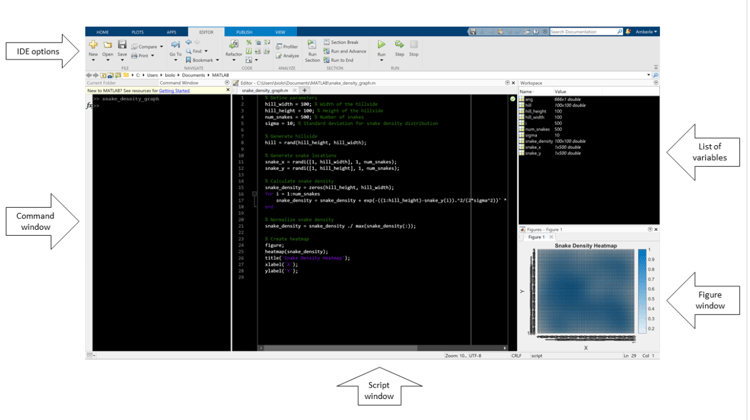Track
I first came across the concept of cloud IDEs when I was collaborating on a side project with a friend based halfway across the world. We needed a development environment that was quick to set up, accessible from anywhere, and more importantly, an environment that could handle real-time collaboration. At the time, I was used to traditional IDEs – installing them locally, managing dependencies manually, and tinkering with configurations. It was frustratingly inefficient and was significantly slowing down our work, so we decided to give cloud IDEs a try.
As their name suggests, cloud IDEs are Integrated Development Environments hosted entirely in the cloud. With no installation required, these tools allow you to write, debug, and test code directly in your browser, and they’re accessible from any device, making it easy to work on the go or collaborate with remote teammates. Whether you’re a solo developer looking for a lightweight setup or part of a team managing complex projects, cloud IDEs offer a great level of flexibility.
In this article, I’ll guide you through some of the top cloud IDEs available today, sharing their features, benefits, and some of the drawbacks I have encountered. Whether you’re a seasoned developer or just starting out, you’ll find insights to help you pick the perfect tool for your workflow. Let’s dive in!
Overview of Cloud IDEs
A cloud IDE is essentially an integrated development environment hosted on the web. Unlike traditional IDEs (like Visual Studio or IntelliJ IDEA), which run on your local machine, cloud IDEs operate entirely in the browser. This means you don’t have to worry about installation, hardware constraints, or maintaining a consistent setup across devices. All you need is an internet connection, and you’re ready to code.
Benefits of cloud IDEs
There are many perks to using cloud IDEs. Imagine being able to pair-program with a teammate in real time or share your environment, no matter where you are. On top of that, cloud IDEs massively simplify the onboarding of new team members by eliminating the need to replicate local setups.
Beyond collaboration, cloud IDEs offer other perks that traditional IDEs can’t match. Many integrate with cloud resources, such as GPUs and TPUs, allowing you to harness serious computational power without investing in expensive hardware. They also scale automatically, which makes them ideal for tackling projects that require vast resources or involve working across multiple devices.
How do cloud IDEs work?
Under the hood, cloud IDEs rely on powerful servers hosted in data centers. When you open a cloud IDE in your browser, it spins up a virtual environment – essentially a remote container or virtual machine – that acts as your development workspace. This workspace includes all the tools and dependencies you need, whether that’s a specific version of Python, Node.js, or even access to high-powered GPUs for machine learning tasks.
The IDE’s interface, which you interact with in your browser, communicates with this backend environment over the internet. Every file you edit, every line of code you write, and every command you run is synced in real time between your browser and the remote server. Many cloud IDEs also offer integrations with version control systems like GitHub, so you can pull and push code changes without leaving the environment.
This architecture is what makes cloud IDEs so powerful: they offload the heavy lifting to servers and provide you with a lightweight, browser-based experience.
Features to Look For in Cloud IDEs
When evaluating cloud IDEs, I’ve learned that not all tools are created equal. While the core idea is the same, the features they offer can vary widely.
Multi-language support
As a developer, I often jump between languages depending on the project I work on. A good cloud IDE should support a wide range of programming languages, from the obvious Python and JavaScript to slightly less common ones like Rust or Go. Multi language support ensures you’re not locked into a single ecosystem and makes the IDE more versatile for diverse projects.
Collaboration tools for real-time teamwork
One of the standout benefits of cloud IDEs is their ability to enable real-time collaboration. Features like shared coding sessions, inline comments, and the ability to see teammates’ cursors can turn remote teamwork into a super enjoyable experience. It is a bit like Google Docs for developers and is really helpful when pair programming or mentoring.
Debugging and version control integration
Debugging tools and Git integration are non-negotiable for me. A cloud IDE should allow you to set breakpoints, step through code, and inspect variables. Similarly, built-in Git support lets you pull, push, and manage branches directly from the IDE without switching contexts. These integrations save time and reduce friction in your workflow.
Accessibility across devices and operating systems
The beauty of cloud IDEs lies in their device independence. Whether I’m on my MacBook, a borrowed Linux laptop, or even a tablet, I expect to be able to pick up right where I left off. A cloud IDE that’s compatible across multiple devices and operating systems ensures maximum flexibility, especially for developers on the go.
Cloud-powered resources like GPUs and TPUs
For projects involving machine learning or data-heavy tasks, access to cloud-based GPUs and TPUs are a must-have. Instead of being limited by your local hardware, a good cloud IDE leverages these resources to supercharge your computations, and allow faster model training, simulations, and large-scale builds.
10 Great Cloud IDEs to Explore
There are many cloud IDEs out there, each with its pros and cons.
1. DataLab
DataLab is a cloud-based notebook developed by DataCamp, designed for data analysis and collaboration. It’s particularly suited for data science professionals and teams who need a quick and efficient environment to analyze data, build models, and collaborate on projects.
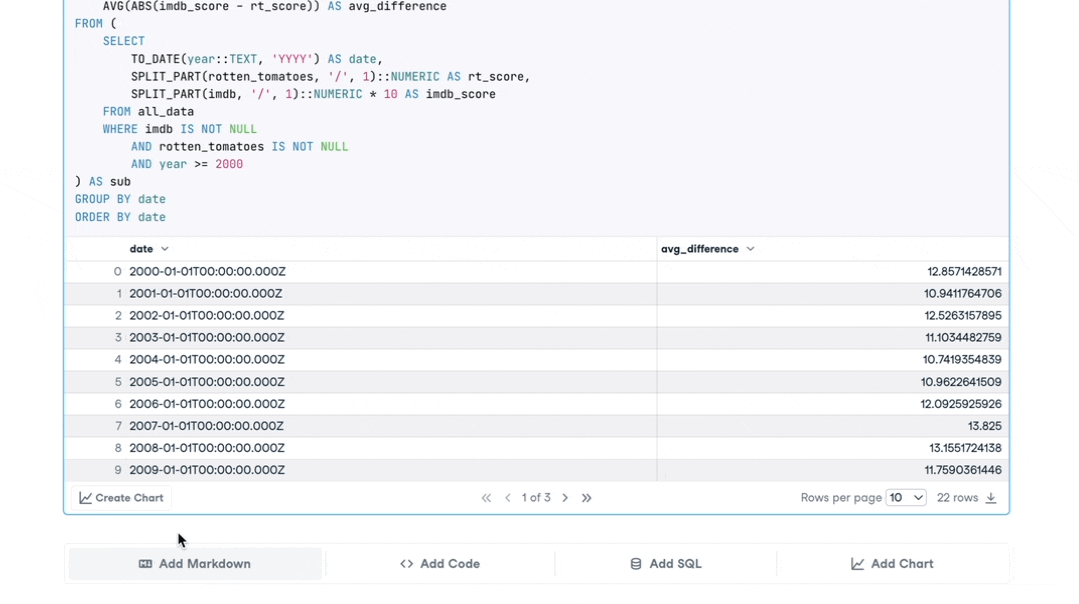
Key features
- Supports Python, R, and SQL.
- Built-in datasets and project templates to speed up development.
- Real-time collaboration features similar to Google Docs.
Catch up with the latest technologies on episode 24 of the DataFramed podcast: Data Science in the Cloud.
2. GitHub Codespaces
GitHub Codespaces offers a cloud-based development environment integrated directly with GitHub. Designed with developers in mind, it streamlines the process of cloning repositories and setting up environments, and is ideal for software engineers working on collaborative projects with Github.
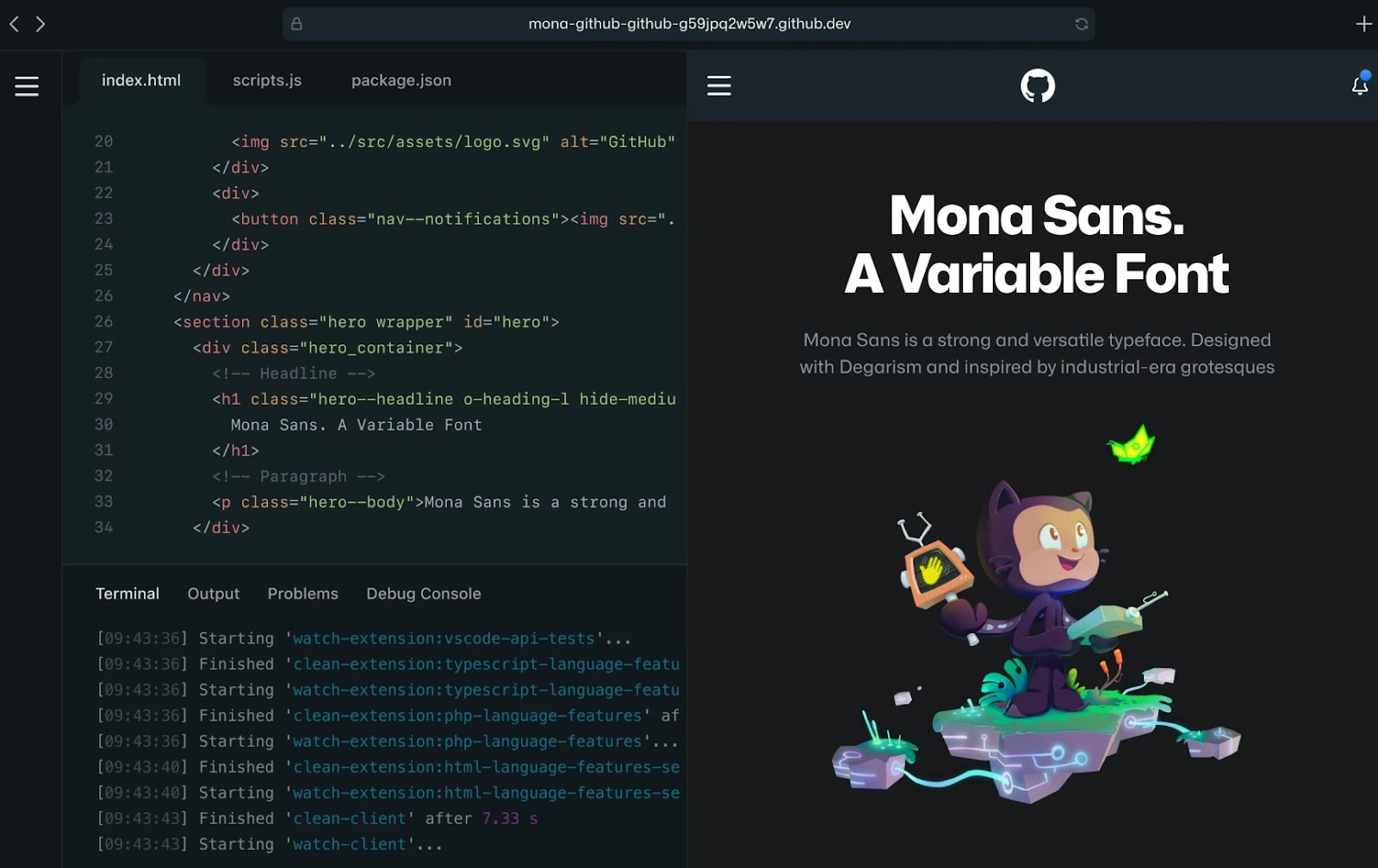
Key features
- Deep integration with GitHub repositories.
- Pre-configured environments with support for multiple languages and frameworks.
- Customizable development setups using Docker and dev containers.
3. Replit
Replit is a versatile and beginner-friendly cloud IDE that supports a wide range of programming languages.
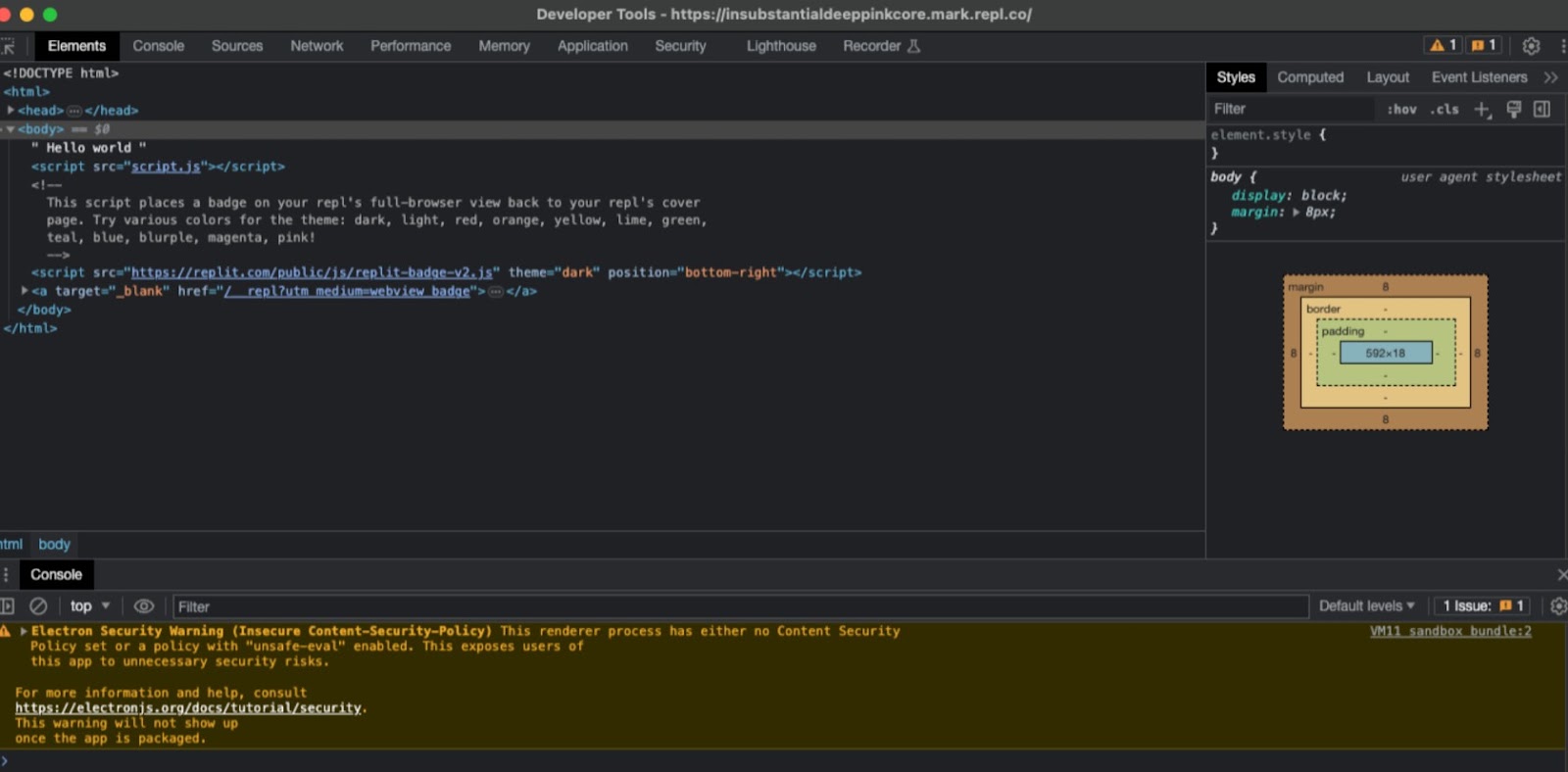
Key features
- Multi-language support for over 50 programming languages.
- Integrated community features, including a public code-sharing platform.
- Collaboration tools for real-time coding sessions.
4. Visual Studio Code Online
Visual Studio Code Online is the cloud-based version of Microsoft's super popular VS Code. VSCode is not technically an IDE, it is a code editor, but with the right extensions it functions just like an IDE so we’ll include it in the list. The online version delivers the same features developers love in a browser-based environment, making it perfect for those who want to access their projects from anywhere without sacrificing functionality.
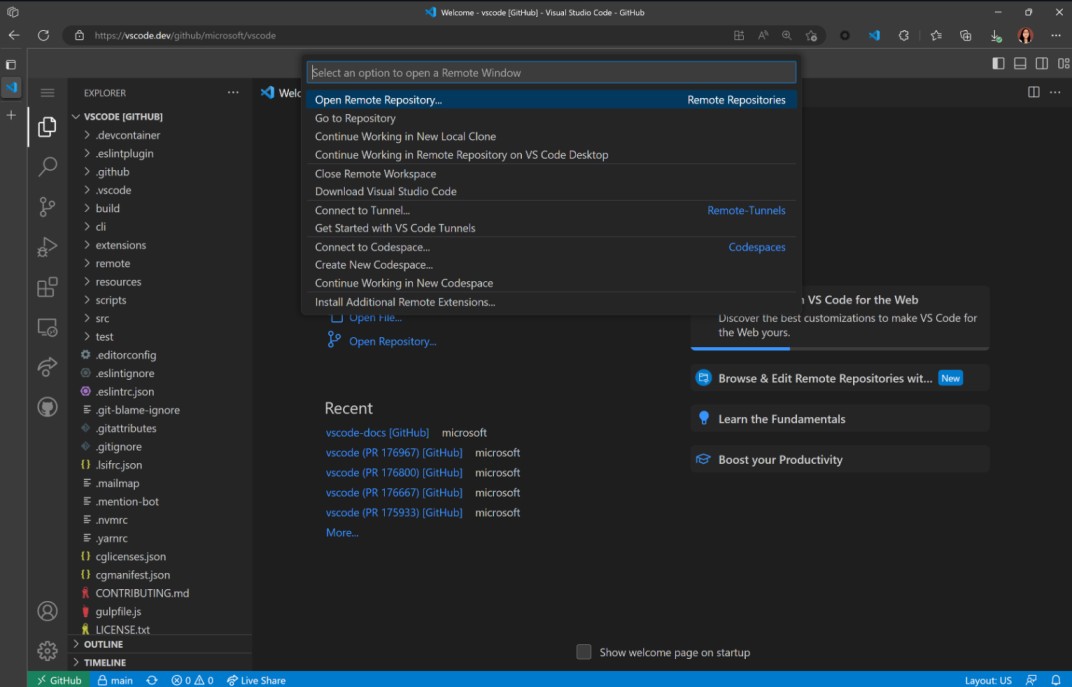 Key features
Key features
- Supports a vast range of programming languages through extensions.
- Integration with GitHub and Azure DevOps for version control and deployment.
- Customizable interface with access to the entire VS Code extensions marketplace.
5. Gitpod
Gitpod is a cloud-based IDE designed for developers who work on Git repositories, providing automated, pre-configured development environments directly from your codebase. Gitpod differs from GitHub Codespaces in its broader integration with multiple Git platforms. It integrates with GitHub, but also GitLab and Bitbucket, which makes it an ideal choice for developers looking for efficient workflows and quick setup.
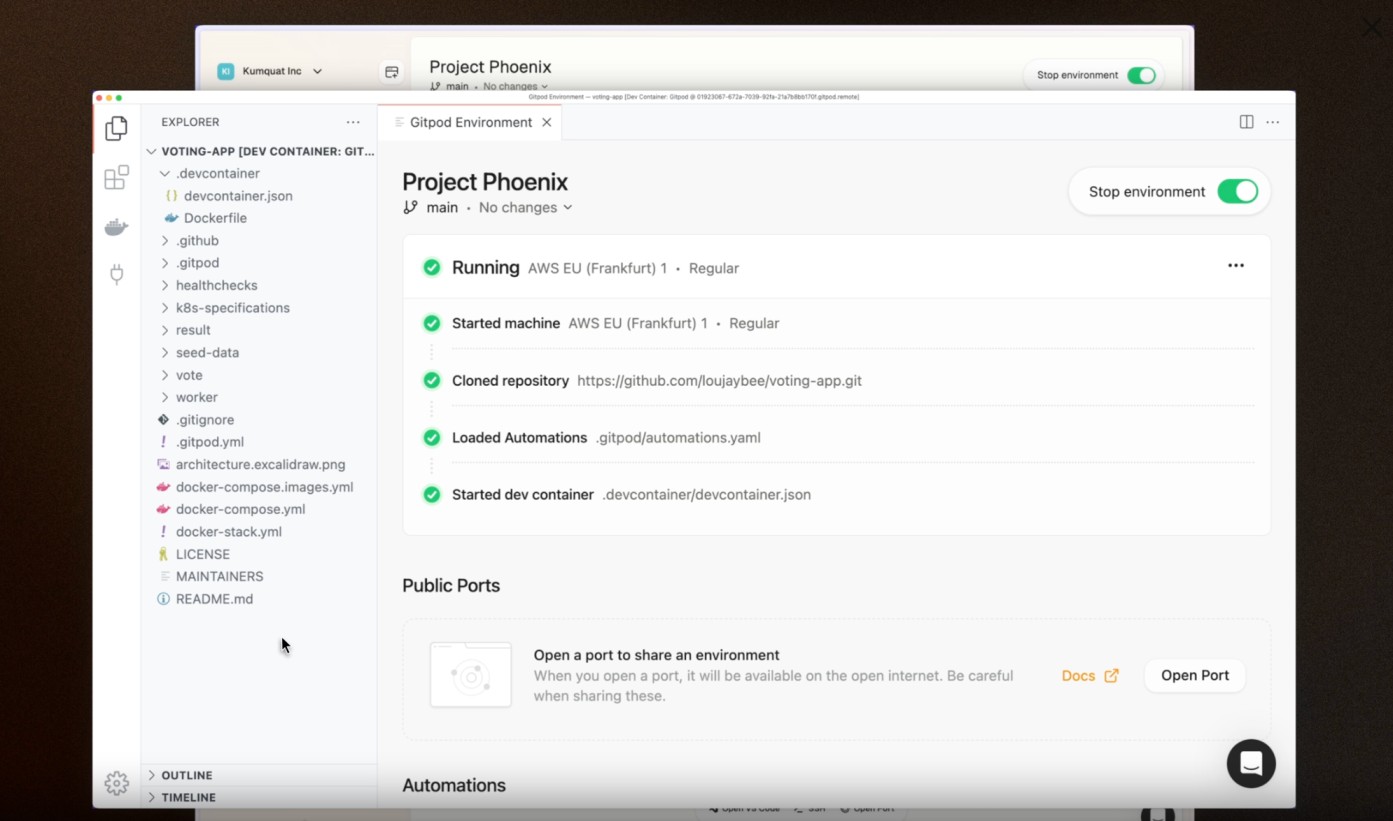
Key features
- Pre-configured environments for your Git repositories, reducing setup time.
- Seamless integration with GitHub, GitLab, and Bitbucket, ensuring smooth version control and collaboration.
- Supports multiple languages and frameworks, including JavaScript, Python, Go, and more.
- Built-in collaborative features that allow developers to pair-program directly in the cloud.
6. AWS Cloud9
AWS Cloud9 is a cloud-based IDE tailored for developers building applications on Amazon Web Services. It’s designed for professionals and teams working on cloud-native projects or leveraging AWS infrastructure for development and deployment.
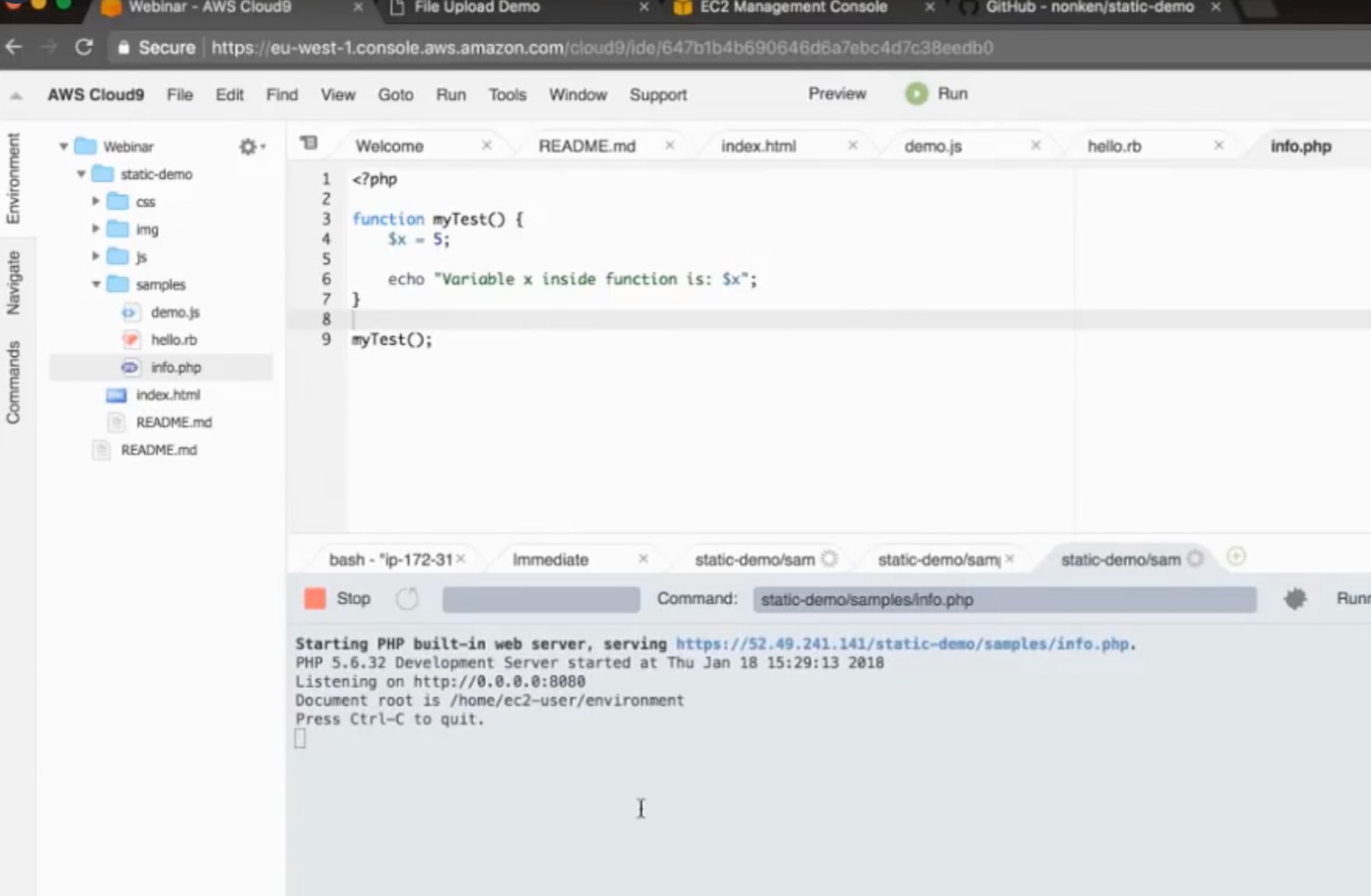
Key features
- Pre-installed tools for multiple languages, including Python, JavaScript, and PHP.
- Full terminal access to AWS resources for easy cloud integration.
- Collaborative coding features for real-time editing and debugging.
7. IntelliJ IDEA Cloud Edition
IntelliJ IDEA Cloud Edition is the cloud-based offering from JetBrains, designed specifically for developers who need the power of IntelliJ in a portable, browser-accessible format. It caters especially to Java developers but also supports a range of other languages and frameworks.
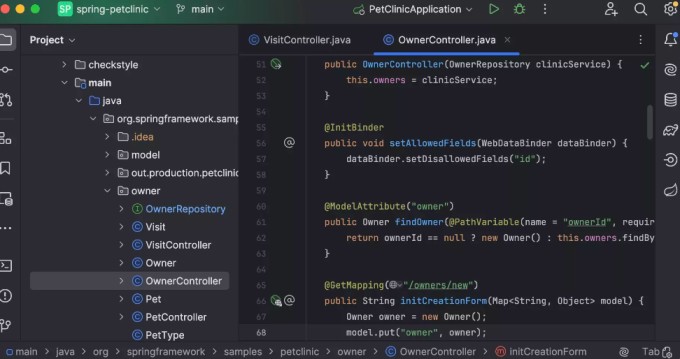
Key features
- Intelligent code completion, refactoring, and on-the-fly code analysis.
- Strong support for JVM-based languages like Java, Kotlin, and Scala.
- Deep integration with GitHub, GitLab, and other version control systems.
8. JetBrains Space
JetBrains Space is another one of JetBrains’ offerings, but it is slightly more than just a cloud IDE. it’s an integrated team collaboration platform combining version control, project management, and development tools. It’s perfect for teams who need an all-in-one solution to manage projects and code.
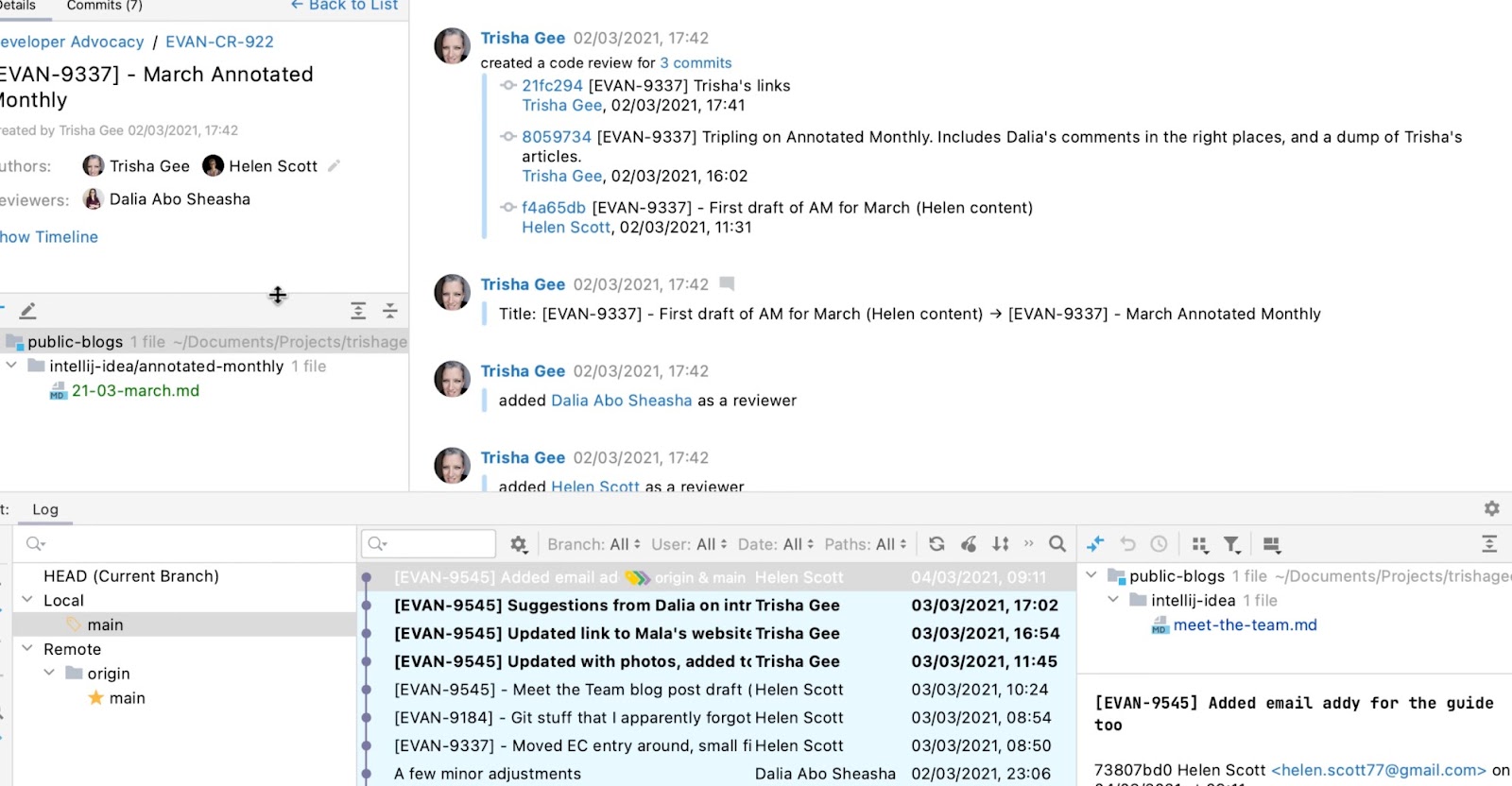
Key features
- Fully integrated IDE with Git hosting and CI/CD pipelines.
- Code reviews, merge requests, and issue tracking all in one platform.
- Strong support for Kotlin, Java, and other JetBrains-supported languages.
9. StackBlitz
StackBlitz is a cloud IDE designed specifically for web developers. It provides a super fast environment with live previews, which is perfect for front-end development and rapid prototyping.
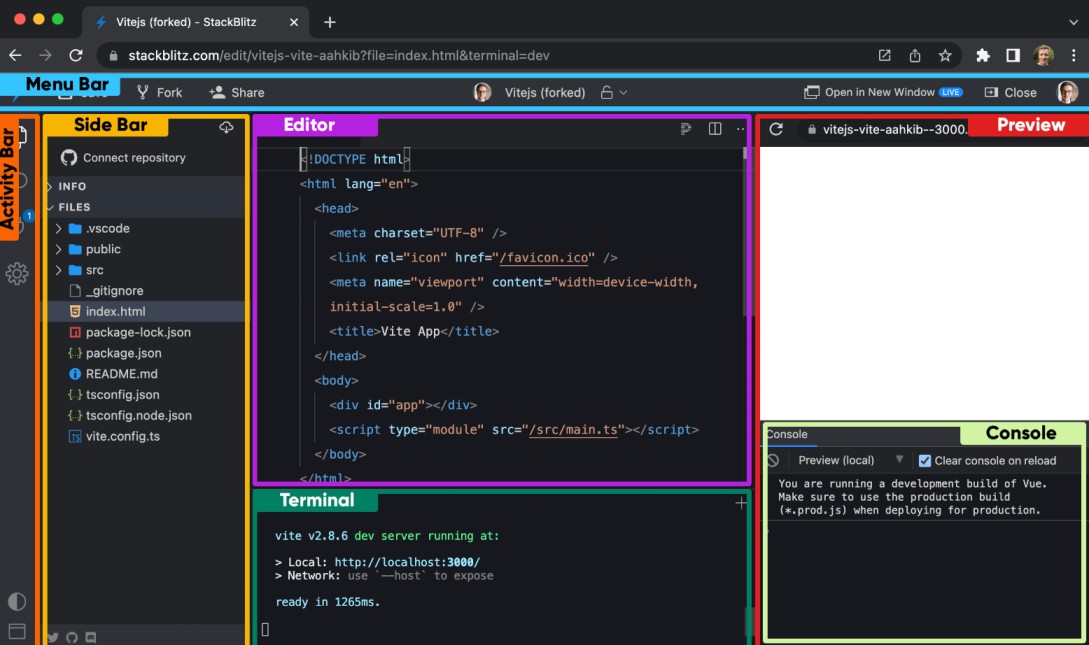
Key features
- Native support for Angular, React, Vue, and other front-end frameworks.
- Instant builds and live previews of your code.
- Offline mode allows coding even without an internet connection.
10. CodeSandbox
CodeSandbox is a cloud-based IDE tailored for web development, particularly focused on front-end frameworks. It allows developers to create, edit, and share web applications directly in the browser, with live previews and instant deployments. Ideal for rapid prototyping, it is popular among front-end developers and those looking for an efficient way to test ideas and collaborate in real time.
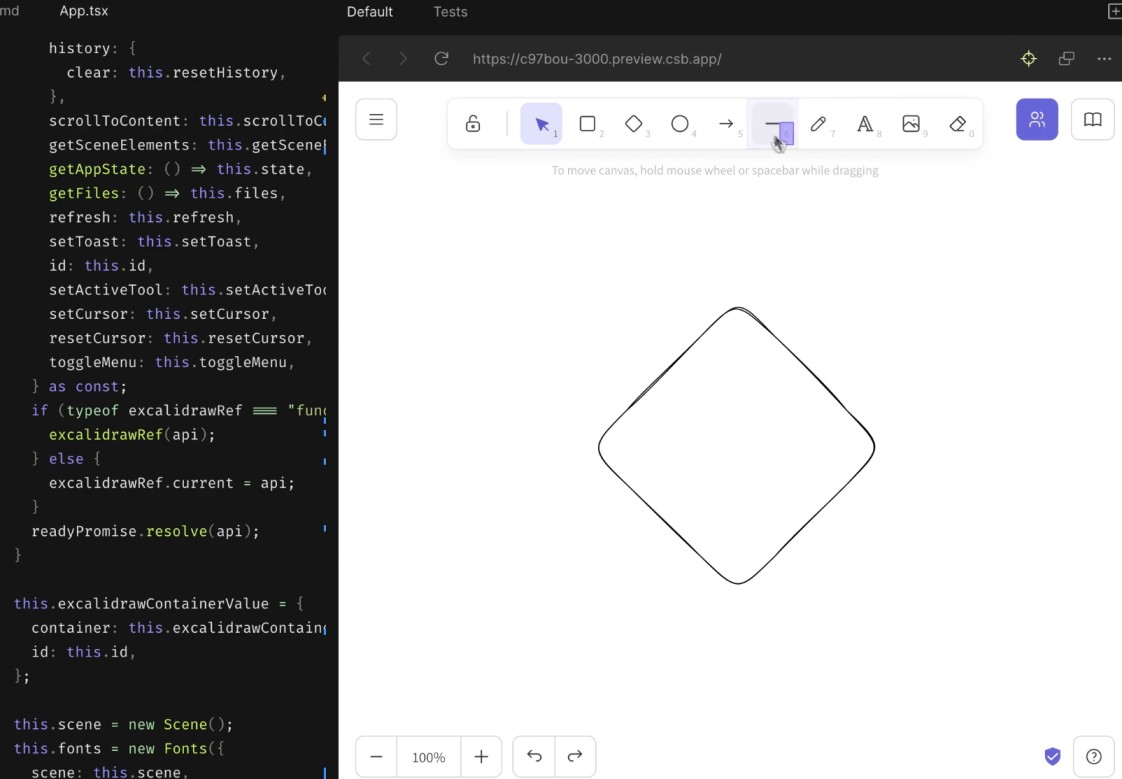
Key features
- Supports React, Vue, Angular, and other popular front-end frameworks.
- Instant live preview of changes, enabling real-time feedback and development.
- Built-in GitHub integration for version control and project collaboration.
- Easy deployment options, including export to a live website or GitHub repository.
Comparison table
Each cloud IDE is going to have its own pluses and minuses. Let's consider the trade-offs for the different cloud IDEs in a table:
| IDE | Pros | Cons | Ideal Use Cases |
|---|---|---|---|
| DataLab | No installation. Tailored for data science teams. Free and premium plans. |
Limited to data-focused languages. Requires internet connection. |
Data analysis, data science teams, collaborative projects |
| GitHub Codespaces | Perfect for GitHub projects. Scales from quick fixes to full workflows. Saves setup time. |
Pricing can add up. Requires Docker knowledge for custom setups. |
GitHub-based projects, collaborative software development |
| Replit | Great for learning, experimentation, and quick projects. User-friendly. Generous free plan. |
Limited resources for large projects. Advanced features behind paywall. |
Learning, hobby projects, beginners |
| VS Code Online | Familiar experience for VS Code users. Rich extension ecosystem. Smooth transition to cloud. |
No Terminal or debugger. Relies on internet connectivity. |
Lightweight changes |
| Gitpod | Automates setup, reducing friction. Good for collaboration. |
Limited offline capabilities. Pricing can be high for small teams. |
Git repository-based projects, team collaboration |
| JetBrains Space | Combines coding with team collaboration and project management. Integrated JetBrains tools. |
High pricing for small teams. Overkill for solo developers or simple projects. |
Team collaboration, large-scale projects, JetBrains ecosystem users |
| IntelliJ IDEA Cloud Edition | Excellent for Java/Kotlin. Powerful project navigation and debugging. Access to JetBrains ecosystem. |
Primarily suited for Java workflows. Pricing may be prohibitive for small teams. |
Java and Kotlin projects, enterprise-level applications |
| AWS Cloud9 | Ideal for AWS users. No setup required. AWS Lambda integration for serverless development. |
Best for AWS users; less appealing outside the AWS ecosystem. Can be complex for newcomers. | Cloud-native development, AWS-based projects |
| CodeSandbox | Fast prototyping, real-time feedback. Easy deployment. Minimal setup. |
Limited back-end support. Performance issues for larger projects. |
Front-end web development, prototyping, collaborative projects |
| StackBlitz | Fast prototyping. Minimal setup. Integrated npm support. |
Limited to web development. No support for back-end languages. Specialized features. |
Front-end development, rapid prototyping |
Selecting the Right Cloud IDE
Selecting an IDE is not just about picking the flashiest or most feature-packed tool. The "right" IDE for you depends on your specific project needs, your team dynamics, and even your budget.
Programming language preferences
The first thing I think about when choosing a cloud IDE is whether it supports the programming languages I use most. If I’m working with Python, for instance, I want an IDE that’s tailored for data science or machine learning tasks, with pre-installed libraries and easy access to relevant frameworks. On the other hand, if I’m writing Java or Kotlin, I need something that offers advanced refactoring and deep code analysis features. Some cloud IDEs specialize in certain languages, so it’s essential to pick one that aligns with your stack.
If you work with multiple languages, finding an IDE that supports a variety of programming languages and frameworks might be more beneficial. This can save you from the hassle of constantly switching between tools depending on the project.
Collaboration and team requirements
I can’t emphasize how much easier life gets when the IDE supports real-time teamwork. If you're working in a team, you might want to look for IDEs that offer collaboration features, such as live coding, pair programming, and integrated version control. I’ve found that cloud IDEs with built-in collaboration features, like live code sharing or in-editor discussions, can make it feel like everyone is in the same room, even when you’re miles apart!
Cloud resource needs
When working on resource-heavy tasks, like training machine learning models or running complex simulations, the cloud-based IDEs that are the most valuable are the ones that provide powerful computing resources, such as GPUs, TPUs, or scalable storage. These resources can be accessed directly from the IDE, saving you the trouble of setting up infrastructure on your local machine.
However, if you’re simply coding web apps or working on small scripts, you might not need all that extra power. In those cases, lighter-weight IDEs that prioritize speed and simplicity, without the need for a ton of cloud resources, may be more than sufficient. It's all about assessing how demanding your projects are and choosing an IDE that can handle it without unnecessary complexity.
Budget constraints
As a freelancer or developer with a limited budget, I know that the price tag of an IDE can be a deciding factor. Thankfully, many cloud IDEs offer a variety of pricing options, including free plans with limited features and paid plans for more advanced needs. While free options can be great for smaller projects or experimentation, you may want to consider investing in a premium plan if you require more computing power or additional features like private repositories, advanced debugging tools, or more collaborative capabilities.
On the flip side, some IDEs operate on a pay-as-you-go model, where you pay based on usage. If you're working on a project that doesn’t require a lot of resources or heavy-duty features, this kind of pricing model can help keep costs down. It's all about figuring out where your needs and your budget align.
Conclusion
In the end, choosing the right cloud IDE comes down to understanding your project’s requirements, how you like to work, and what you can afford. Whether you're working solo or collaborating with a team, need a simple text editor or a powerful computational environment, there's an IDE out there that can help make your development process smoother and more efficient.
I’d recommend trying out the free versions of a few different cloud IDEs to see which one you like. Everyone has their own preferences, so playing around with a few options will help you figure out which one fits your style and needs best.
If you’re focused on data development, DataLab is definitely worth a look. It's a great R, SQL, and Python cloud IDE that is perfect for data science teams and offers built-in datasets and real-time collaboration tools. It makes the whole data analysis process smoother and more efficient, especially when you’re working with a team. If you are looking to get started with it, have a look at those two code-alongs:
- Only Code If You Want To: Data Science with DataLab (Part 1)
- Only Code If You Want To: Data Science with DataLab (Part 2)
Ultimately, there’s no one-size-fits-all answer, but the right cloud IDE can make a huge difference in your workflow. You might even find that you prefer traditional IDEs, and that’s perfectly fine, but you won’t know for sure until you’ve tried!

I am a product-minded tech lead who specialises in growing early-stage startups from first prototype to product-market fit and beyond. I am endlessly curious about how people use technology, and I love working closely with founders and cross-functional teams to bring bold ideas to life. When I’m not building products, I’m chasing inspiration in new corners of the world or blowing off steam at the yoga studio.
Frequently Asked Questions About Cloud IDEs
Are cloud IDEs secure for handling sensitive data or proprietary code?
Most cloud IDEs implement strong security measures like encryption, secure authentication, and access control to protect sensitive data. However, it's important to choose a provider with a good reputation for security and ensure that your code is stored and managed according to industry best practices.
Can I use a cloud IDE for large-scale enterprise applications or just for small projects?
Cloud IDEs are often used for smaller projects, but many tools can scale to accommodate larger enterprise applications. However, for complex, resource-intensive projects, you need to make sure the cloud IDE offers the necessary cloud resources and integrations, such as GPUs or cloud-based storage, to meet the demands of your application.
Do I need a fast internet connection to use cloud IDEs effectively?
Yes! Cloud IDEs rely on an internet connection to provide real-time updates and cloud-based resources. A fast and stable internet connection is ideal for smooth performance, especially when working on larger projects or collaborating in real time with a team. Slow connections can lead to delays or interruptions in your workflow.
Are there free cloud IDEs, and how do they compare to paid versions?
Many cloud IDEs offer free plans, though these often come with limitations, such as fewer resources, fewer features, or restricted collaboration options. Paid versions typically offer enhanced functionality, better performance, and priority support. Free plans are great for small projects or personal use, but for more advanced features, a paid version may be needed.
